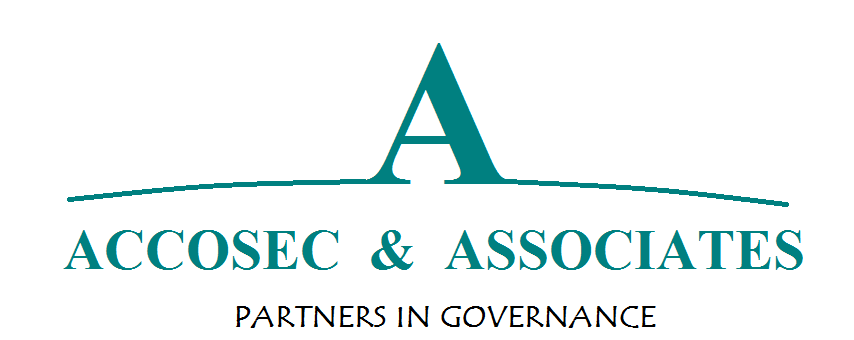News
CULTURE - It could mean the difference between success and failure
What is culture?
It's how you feel when you walk in the front door and interact with the people.
It’s the electricity in the air; the vibe you get from being serviced in a unique way that makes you feel like royalty; the mood and attitude that sets the tone for the workplace, which is in harmony with how its people feel in their heart-of-hearts.
Peter Drucker famously said: "Culture eats strategy for breakfast."
The premise held by Drucker is that a company's culture will trump any effort by a management team to enforce a strategy that is incompatible with that culture. In the end, it's culture that wins.
When leaders get it right, it's like catching lightning in a bottle. It becomes one of the most treasured elements to transform the employee experience from one that drains and discourages, to one that energizes and empowers.
Ensuring that culture is upheld - its beliefs, behaviours, purpose, and values - falls squarely on the shoulders of senior leaders as “caretakers of culture”. They advocate the company's identity and protect its culture for competitive advantage.
They are caretakers of the people that make up the culture -- its employees, who then are held responsible for living out the principles that hold the culture together.
But what makes these "caretakers of the culture" stand out?

1. Invite feedback.
It takes humility, an open mind, and a lot of active listening with employees' interests in mind to be open to feedback. As caretakers of the culture, good leaders will ask peers and respected high-performers the tough question, "How am I doing as a leader?" And then they listen. They are truly interested in receiving honest feedback so they can grow themselves and others.
2. Play for the team.
Leaders that forge ahead with a win-at-all-costs agenda at the benefit of some and expense of others will quickly create silos, alienate people, and lose respect of the whole. Caretakers of great company cultures don't seek the glory or take the credit; they empower their people to brainstorm solutions that add value and benefit the whole team and give them all the glory after a great effort.
3. It doesn't happen without trust.
Leaders championing a company's culture need to ask a very important question: "Does my behaviour increase trust?" If you want to ensure your culture is safe and its common set of values are held tightly without being violated, trust is a non-negotiable pillar that every person -- leaders, employees, and other stakeholders alike -- should stand on.
4. Selfless leaders that serve the culture.
A leader who operates with a primary emphasis on self-interest naturally views other people as a means to that end. You cannot be a true leader if you operate at that level of consciousness. Selfless does not mean eradicating the ego...it is about harnessing the ego in healthy ways. As the Dalai Lama has said, '[W]e must make sure it is a serving ego and not a deserving ego.'
5. Foster vulnerability across the organisation.
Creating a space in which people can feel vulnerable means a person can walk into their boss's office to admit a mistake without fear of losing their job. It means someone can raise their hand and ask for help, admit they have been given a responsibility they don't feel prepared or knowledgeable enough to complete, or admit they are scared without any fear of humiliation or retribution. In contrast, in a work environment that lacks good servant leaders, people will go out of their way to follow the rules at all costs, cover up mistakes, and deny accountability.
6. Firmly believe in their people.
In an interview with Rolling Stone magazine in one of the lowest points of his career, Apple founder Steve Jobs once said: "What's important is that you have a faith in people, that they're basically good and smart, and if you give them the tools, they'll do wonderful things with them." As Jobs evolved as a leader, he demonstrated increasing faith in his employees. As caretakers of the culture, you adopt a "trust first" mindset before trust is earned because you accept and believe in your employees' abilities to use their brains and talents to create and innovate.
7. Create trust
The culture of any entity is its internal attitude, a successful culture breeds trust, a trust that can be displayed both internally and externally. Then following on from this is the reputation a company builds up. It may take many years for a culture to be demonstrated in reputation, but a failure of culture can destroy a reputation. As Warren Buffet once said; ‘it can take 25 years to build a reputation but 5 minutes to destroy it.’
Download a PDF copy here CULTURE - It could mean the difference between success and failure
Legal Issues in Subsidiary Governance.
A director of a non-wholly owned subsidiary must act in the best interests of that entity, even where those interests conflict with those of the parent company.
It is very important in establishing subsidiary governance arrangements to ensure that these arrangements are consistent with the purpose for which the subsidiary is established.
It is significantly easier to ensure good governance and compliance if all the subsidiaries in a corporate group adopt substantially identical constitutions.

In additional to matters usually covered in company constitutions, wholly owned subsidiary constitutions should:
- authorise the directors of the subsidiary to act in the best interest of the holding company.
- authorise the directors of the subsidiary to provide confidential information to the holding company and
- permit passing of written resolutions of the directors by email and other technological means.
Directors and secretaries of subsidiaries must exercise their powers and discharge their duties with care and diligence in good faith in the best interests of the company for a proper purpose.
They must not misuse their position or information which they have a duty to prevent the subsidiary trading while insolvent and may be held personally liable for debts incurred by the subsidiary trading while insolvent.
Deregistration of dormant subsidiaries.
Chapter 5A of the Corporations Act provides a relatively straightforward process for deregistering inactive subsidiaries. The process is available to a company where:
- all the members of the company agree to the deregistration; and
- the company is not carrying on business; and
- the company’s assets are worth less than $1,000; and
- the company has paid all fees and penalties payable under [the Corporations Act];
- the company has no outstanding liabilities; and
- the company is not a party to any legal proceedings.
If ASIC is not aware of any failure to comply with the requirements of s 601AA it must publish a notice of the proposed deregistration in the Gazette any may deregister the company two months after publication of the notice.
Download a PDF copy here Legal Issues in subsidiary governance
Governance lessons from the Essendon drug scandal
There’s no doubt that Essendon Football Club’s (EFC) Supplements Program of 2012 was a mistake of the highest magnitude. While we can’t undo the past there’s a significant number of lessons that we can and have learned from it.
Top of Form
Bottom of Form
There’s no doubt that Essendon Football Club’s (EFC) Supplements Program of 2012 was a mistake of the highest magnitude.
While we can’t undo the past there’s a significant number of lessons that we can and have learned from it. Dr Ziggy Switkowski’s report highlighted several areas where the board, the CEO and the staff could have improved how we ran our organisation. Many of these learnings are not isolated to EFC, they confront football clubs, businesses and non-profit organisations of every shape and size each and every day.
All of these types of organisations evolve over time, but club football in Australia has changed considerably in the past 30 or 40 years. We’ve gone from suburban football clubs with a few dedicated staff members dependent on tin rattling and chook raffles to serious businesses. While players were semi-professionals who typically had a day job, nowadays they’re professional athletes. In the 1980’s the football economy was created.
Running a football club is now a serious business, and serious businesses need good governance. We transitioned into the football economy at breakneck speed and some key elements of governance didn’t keep up, which meant we weren’t up to the professional or corporate standard of an organisation of our size. These things may have derailed your average private company, and eventually they caught up with EFC too.
Lack of good governance is why good people did bad things at EFC
It’s easy to point the finger at a bad guy and blame them when something goes wrong, but when you look at what happened at EFC quite forensically you realise that there’s no real bad guy. There’s a fairly long list of people who each made small mistakes. They didn’t quite sort out a problem that they should have over there, they tried to fix something here but didn’t try hard enough or they thought a decision had been implemented when it hadn’t.
People only saw bits and pieces, and no individual could have seen the disaster that was coming. They were captives of an inadequate governance structure. It’s similar to an air crash investigation, where a major air disaster wasn’t caused by one single thing, but rather it was a serendipitous collision of four or five often relatively minor things.
In The Origins of Ethical Failure, Dennis Gentilin discusses the issue of how people with a reasonable moral compass end up doing bad things in organisations. Without butchering Gentilin’s eloquent book, he highlights the importance of organisational context and culture, group behaviour and the signals that leadership sends.
The great lesson is that informal context in an organisation always trumps rules. So even if your policies say you should do something this way, if you’re surrounded by people who tell you that you should do it differently, you’re almost certainly going to go with the flow. This can lead to you losing perspective or seeing why that’s the wrong thing to do. In addition, we all absorb signals from people in leadership about what’s acceptable and what’s not. Whether it’s coming from the boardroom or cabinet, people take in these cues and modify their behaviour accordingly. That’s why how you behave as a leader in an organisation is so important. It demonstrates what really matters and is often more powerful than words.
So when you’re on a board and put in place governance processes, it’s crucial that these are followed to a tee by everyone from the top down. It might feel like nitpicking, it might be bureaucratic, it might be boring, but if you let it slip, you’re exposing your organisation and ultimately you personally, to the risk of disaster.
The whole drama at EFC was ultimately a classic failure of governance and I think it’s important that others can learn from our mistakes. There were three key areas of corporate governance that EFC needed to bring up-to-standard:
Accountability and responsibility must be crystal clear
One of the key issues highlighted by the Switkowski report was that there was a bit of a ‘no one is in charge’ problem at EFC. While football clubs don’t necessarily have the same structure as corporate organisations, lines of accountability and clear definitions of responsibility are crucial.
There were a number of areas where this fell down, from recruitment processes to the hierarchy of decision-making. While it’s desirable to have flexible workforces, there still needs to be discipline when it comes to updating accountabilities, job descriptions and reporting lines. It’s up to the CEO to ensure that any vague areas are clarified and rectified.
This level of governance extends to policies and procedures. These can’t just sit in a drawer gathering dust. They’re living documents that cover all aspects of how an organisation runs, and as the organisation changes they must be reviewed and amended. When you’re evolving as quickly as EFC did this can be challenging, but it’s the board’s responsibility to make sure it’s done every year.
In the end, the ultimate accountability rests with the board. They need to be kept informed of what’s going on, and if there are areas where they don’t have visibility, then it’s up to the board to make sure they get the information they need. If a course of action has been approved by the board, they need to ensure it’s followed through by asking for reports on how it’s been implemented.
Being a board member isn’t a passive role. The ultimate responsibility rests with you, so ask questions, speak to people at all levels of the organisation and demand information if you need clarity.
Transparency is crucial
The CEO isn’t always the most powerful and important person in the room, in fact there are many organisations where the power lies in two separate areas. For example, while there may be a departmental secretary in the defence department or police forces, the real power often lies with the person in the uniform. Similarly, when I was the Minister responsible for the Future Fund, the Chief Investment Officer was often paid more than the CEO. At EFC, the CEO was charged with managing the business, and the football department actually looked after the players and the game.
Having two centres of power raised additional challenges of governance, and this is something I think EFC failed to fully comprehend. After all, 20 years ago EFC was a relatively small organisation, but now we employ over 100 people and have annual revenues that exceed $50 million. The football operations alone have about 40 people. A structure of this size needs to be appropriately managed and it needs to be open to review.
These are not challenges unique to EFC, most football clubs at that time probably were in the same boat. Having two alternative centres of power, functioning like autonomous little worlds means it can be almost impossible to understand who’s responsible unless you have good governance processes and transparency.
Transparency needs to extend to understanding why the organisation is structured the way it is, and how you manage it. This can be achieved by conducting a review of the organisational structure, but it’s crucial that it’s taken very seriously and structured appropriately because it can be the source of real and serious problems.
I’m currently involved in conducting a review of the Defence Department. As part of this review, we have spent a lot of time thinking about our diarchy. Effectively there is a dual management position, with a Departmental Secretary and the Chief of the Defence Forces. As there’s no simple ‘one person is in charge’ solution, it comes down to operating arrangements and protocols.
Document everything that matters
This may seem obvious but documentation can easily fall through the cracks. Ultimately it was one of the critical failings for EFC. When things go wrong the easiest way to review what happened is to see what’s been documented. That’s why it’s so essential that every decision that matters is recorded appropriately.
Documenting what’s going on should really be an instinctive response for any organisation. Whether you’re making decisions, implementing decisions or doing potentially risky things, every important decision should live in a document trail.
But it’s not enough for the board or leadership to outline instructions, no matter how unambiguous they are. These must be written down, and compliance to them must also be recorded. This may require monitoring processes to be put in place. It’s not enough to assume everyone will follow your orders to the letter, risk management and good governance requires you to ensure that this happens and that a document trail supports this.
Download a PDF copy here Governance lessons from the Essendon drug scandal
Beneficial Shareholder Notice
What is a tracing notice?
Listed companies have the power under Pt 6C.2 of the Corporations Act to issue beneficial ownership tracing notices to require any of their members to disclose details about their relevant interests in shares in the company. ASIC may also issue tracing notices on its own initiative or if requested to do so by a member of a listed company.
The beneficial tracing provisions in Pt 6C.2 operate in tandem with the substantial holding provisions in Pt 6C.1 of the Act. The tracing provisions enable listed companies to ascertain relevant interests in their shares so as to protect against any breach of the substantial holding disclosure requirements. To this extent, the tracing provisions are anti-avoidance provisions.
If a tracing notice is given by a company, the information must be disclosed within two business days after the company gives the notice and pays the prescribed fee required under s 672D.
Information received in response to tracing notices must be kept by the company in a register under s 672DA of the Corporations Act.
Disclosure required
Under s 672B(1), a person who receives a tracing notice is required to disclose to the body which gave the direction the following information:
- full details of the person’s own relevant interest in shares and of the circumstances that gave rise to the relevant interest;
- names and addresses of all other persons who have relevant interests in any of the shares with full details of the nature and extent of each interest and the circumstances that gave rise to it; and
- the name and address of any person who has given the person instructions about acquiring or disposing of shares, exercising any voting or other rights attached to shares, or any other matter relating to shares. Full details of any such instructions are to be given, including the date or dates on which they were given.
Note however that details about other persons need only be disclosed to the extent to which the person knows about them.
Failure to disclose
The consequences of failing to comply with a tracing notice can be severe. Failure to disclose information as required by s 672B(1) is an offence of strict liability carrying a penalty of $4,500 or imprisonment for six months, or both. Remedial orders, including divesting orders, can be made by the Court under s 1325A, and by the Takeovers Panel under s 657D following a declaration of unacceptable circumstances.
Instances where disclosure may be avoided
Disclosure may be avoided if it is proved that the request for the information is vexatious under s 672B(3). ASIC also may grant an exemption and modification in relation to Pt 6C.2. ASIC has indicated however that it will refuse requests for exemptions which are made for no other reason than to “buy time”. In ASIC’s view, a reason will only be “special” if the information or the cost or difficulty of supplying it is “extraordinary, unusual or atypical”.
The following are not special reasons:
- difficulty in complying with the notice in the time required
- the ordinary confidentiality requirements of nominees and their principals
- the ordinary cost and inconvenience of providing information.
We understand that ASIC does not envisage that exemptions will often be granted.

Download a PDF copy here BENEFICIAL SHAREHOLDER NOTICE
ASX reverse takeovers rule amendments
ASX has released Response to Consultation on Reverse Takeovers, together with Exposure Draft Listing Rule Amendments . The proposed amendments will require a bidder to obtain shareholder approval under Listing Rule 7.1 for a reverse takeover. The proposed amendments implement the proposal ASX consulted on in November 2015.
ASX’s review of voting exclusions in the context of reverse takeovers has also highlighted additional amendments to the voting exclusions in the Listing Rules that ASX considers should apply to all transactions. Those broader amendments are set out in further detail below.
Definition of reverse takeover
A “reverse takeover” will be defined as a takeover bid or a merger by way of scheme of arrangement under Part 5.1 of the Corporations Act where an entity is proposing to acquire securities of another body and the aggregate number of equity securities issued or to be issued by the entity:
- under the takeover bid or scheme; and/or
- to fund the cash consideration payable under the takeover bid or scheme,
is equal to or greater than the number of fully paid ordinary securities on issue in the entity at the date of announcement of the takeover bid or scheme. Separate issues may be aggregated if, in ASX’s opinion, they form part of the same commercial transaction.
Implementing the requirement for shareholder approval
The requirement in Listing Rule 7.1 to obtain shareholder approval for issues of securities above the 15% threshold in that rule is currently subject to two relevant exceptions in Listing Rule 7.2, exceptions 5 and 6 for issues made under, or to fund the cash consideration under, a merger by way of scheme of arrangement under Part 5.1 of the Corporations Act.
ASX proposes to amend Listing Rule 7.2, exceptions 5 and 6 so that those exceptions do not apply to issues under, or to fund, a reverse takeover. This will have the effect that an issue of securities under, or to fund, a reverse takeover will require approval under Listing Rule 7.1.
Disclosure requirements
ASX Listing Rule 7.3.8 sets out the information required to be disclosed in a notice of meeting seeking approval under Listing Rule 7.1. ASX proposes to amend this rule to require bidders to disclose information ‘in relation to the reverse takeover’.
ASX will be issuing a new Guidance Note 21 ‘The Restrictions on Issuing Equity Securities in Chapter 7 of the Listing Rules’, which will outline the information ASX expects to be disclosed in this regard. ASX’s preliminary guidance on disclosure requirements for a shareholder approval for a reverse takeover is set out in the Response to Consultation.
Voting exclusions
Listing Rule 7.3.8 requires a notice of meeting proposing a resolution to approve an issue of securities under Listing Rule 7.1 to include a voting exclusion statement.
ASX proposes to amend the voting exclusion requirement for resolutions under Listing Rule 7.1 so that it applies to the following persons and their associates:
- where the resolution relates to a proposed issue under a reverse takeover – the reverse takeover target and any person who will obtain a material benefit as a result of the reverse takeover or the proposed issue (except a benefit solely by reason of being the holder of ordinary securities in the entity or the reverse takeover target);
- where the resolution relates to a proposed issue to fund a reverse takeover – the reverse takeover target, any person who is expected to participate in the proposed issue, and any person who will obtain a material benefit as a result of the reverse takeover or the proposed issue (except a benefit solely by reason of being the holder of ordinary securities in the entity or the reverse takeover target); and
- in any other case – any person who is expected to participate in, or who will obtain a material benefit as a result of, the proposed issue (except a benefit solely by reason of being the holder of ordinary securities in the entity).
These amendments would generally permit common shareholders in the bidder and target to vote on the resolution to approve the reverse takeover unless the shareholder has an additional interest that is materially different to other bidder or target shareholders.
The proposed new Guidance Note 21 mentioned previously will outline what ASX considers to be “material benefits” for these purposes. ASX’s preliminary guidance on what may constitute a ‘material benefit’ is set out in the Response to Consultation.
More broadly, ASX proposes to limit the voting exclusion in Listing Rule 14.11 to so that it only applies to excluded persons and their associates who vote in favour of a resolution under the Listing Rules. Excluded persons and their associates will be permitted to vote against the resolution. ASX also proposes to amend the definition of ‘associate’ in the Listing Rules to address some gaps in its coverage. These changes will apply across the board and will not be limited to resolutions under Listing Rule 7.1.
Time within which securities must be issued
Listing Rule 7.3.2 currently requires a notice of meeting proposing a resolution to approve an issue of securities under Listing Rule 7.1 to disclose that the securities will be issued within 3 months of the approval being given. ASX proposes to extend this period to 6 months where an issue is being made under, or to fund, a reverse takeover.
Download the PDF copy here ASX reverse takeovers rule amendments
Constitution v Replaceable Rules
Choosing the Company Rule-Book – Constitution vs Replaceable Rules?
Since July 1998, all newly formed companies must be governed by a set of rules. Modern companies can either adopt a constitution, the Replaceable Rules, or a combination of both. Prior to 1998, companies were usually governed by ‘articles of association’ (supported by a ‘memorandum of association’).
Regardless of whether you adopt Replaceable Rules or a constitution, it is important that all company directors and shareholders understand the rules governing the company and their conduct. Having a well drafted constitution document can often be a more convenient way to understand each person’s rights and obligations in relation to the company. Should an internal disagreement occur, a constitution provides all parties with an easy point of reference so that disputes can be settled more quickly.
Constitution vs Replaceable Rules
Replaceable Rules are contained in section 141 of the Corporations Act 2001 (Cth) (‘the Act’). These are the ‘default’ rules and regulations prescribed by the Act which govern the powers of directors, appointment of directors, transfers of shares and rules relating to meetings.
Instead of adopting the Replaceable Rules, a company can choose to adopt a constitution instead. A constitution is a detailed document which sets out the rules governing the company’s internal operations, and overrides the Replaceable Rules contained in the Act. The constitution operates as a contract between the company and each member, director and company secretary. It also acts as a contract between each member – see section 140(1) of the Act.
The following table shows the potential benefits and disadvantages of a constitution compared with Replaceable Rules.
| Constitution | Replaceable Rules |
| Benefits
A constitution can govern a wider range of companies. A constitution can be tailored to the specific wants and needs of its officers and shareholders. A constitution can allow for better succession planning and control. For example, it may require that shares are offered and sold to existing shareholders first. A constitution allows a company to be governed with a higher level of specificity. This is particularly beneficial with regards to establishing several classes of shares and rights attached to those shares. The shareholders can amend a constitution. This makes a constitution far more flexible than Replaceable Rules. A constitution is a single document that is easily accessible. A constitution can regulate behaviour relating to any owned subsidiaries. |
Benefits
Inexpensive means of acquiring a system of internal governance. As Replaceable Rules are part of the Act, if the Act is amended then so are the rules of your Company (at no cost to you). |
| Disadvantages
A constitution can be more expensive to draft and maintain. A constitution requires a Special Resolution to amend or adopt, which may cause issues when conditions change suddenly. Any modifications imposed by legislation must be adopted in order to keep the constitution up to date with the current laws. |
Disadvantages
Replaceable Rules are fixed and cannot be amended (however, a constitution can be adopted at a later date replacing the Replaceable Rules). The provisions formulating Replaceable Rules are spread out throughout the Act, and its huge size and complexity may be difficult to interpret and understand. Replaceable Rules are the default position under the Act, which may make them inappropriate for individual circumstances. |
Deciding whether to use a Constitution or adopt Replaceable Rules can be confusing. Although Replaceable Rules are the cheapest option, they may not be the most appropriate option (or even an option at all) in the circumstances. For example, a small business run through a sole director/sole shareholder company is not allowed to use Replaceable Rules – instead, the Act says that they must adopt a company constitution. Other companies which cannot adopt Replaceable Rules include no liability public companies and special purpose SMSF companies.
The larger the size and complexity of the company, the more likely the company will need a constitution. Where companies involve non-related parties, then the need for a constitution becomes even more important as there may be specific circumstances or agreements between parties that are not properly dealt with by the Replaceable Rules.
Companies with more complex affairs (such as where there are many unrelated shareholders and/or where shareholders have unequal powers) can also consider a Shareholders’ Agreement which stands side-by-side with the constitution. A Shareholders’ Agreement provides protection by further regulating the conduct of Shareholders and the company. However, Shareholders Agreements are highly customised documents which require legal advice from a solicitor practicing in that area.
Download the PDF copy here Constitution v Replaceable Rules
Directors’ duties & governance in the Not‐for‐Profit sector
Board members of a not-for-profit organisation are subject to the same statutory and common law duties as directors of other companies. Of course, discharging those duties as a not-for-profit company director will be very different to the way that is done when running companies that embark on highly speculative ventures or could be exposed to much higher liability (e.g. a mining company in Africa). Nevertheless, threshold duties, such as acting honestly, exercising care and diligence that a reasonable person would in the director’s position, and acting in good faith and for a proper purpose, cannot be understated in any corporate context.
Following the introduction of the Australian Charities and Not-for-profits Commission (ACNC), some may be forgiven for thinking all not-for-profit organisations fall outside the clutches of the Corporations Act. This is not
the case. The principal function of the ACNC is to register and regulate charities. From 1 July 2013, some Corporations Act obligations will not apply to charities. However, for other not-for-profit organisations registered
as companies under the Corporations Act, many obligations will remain, including directors’ duties.
Corporate governance principles
Both Government and organisations like the Australian Institute of Company Directors (AICD) have endeavoured to assist board members of not-for-profit companies to establish good corporate governance principles. Minimum governance standards proposed by the Federal Government in December 2012 will apply to charities only and cover things like accountability to members, compliance with the law and responsible management of financial affairs.
The AICD has been mindful of the fact that other not-for-profit organisations must still meet a set of minimum governance standards which are different to those applying to charities. The AICD’s suggested standards cover the following areas:
- Roles and responsibilities
- Board effectiveness
- Board composition
- Integrity and accountability
- Purpose and strategy
- Organisation building
- Risk and mitigation
- Culture and ethics
- Organisation performance
- Stakeholder engagement.
With charities and other not-for-profit organisations now playing an influential part in the broader economy,
adherence to sound corporate governance principles can only be a good thing
Effective Governance in small business
Too often, business owners are caught up “in” the operating of the business, with no time left to work “on” the business. Consequently, the business evolves without any clear strategy for growth and in a cycle of reactivity rather than by design through proactive planning.
With over two thirds of the Australian economy made up of family businesses, there is the added complexity of ownership, management and family issues often overlapping and impacting the business. Separating these issues through appropriate governance forums is considered best practice.
Governance is no different to any other business decision. It is important to do the research and evaluate the expenses verses the outputs as part of the decision making process.
Cost: There are two sides of the equation to be considered when assessing the cost to the business:
- What is the cost of time and money in establishing a Board and holding meetings?
- What is the cost of not establishing effective governance practices?
It’s quite simple to measure the financial costs for Director’s fees, expert advisers and the time value of key executives attending Board meetings.
However measuring the intangible costs to the business is more difficult.
A lack of direction and focus, jumping from one challenge to the next, working in the business and managing, rather than directing, all impact on the ability to lead, stay ahead of the competition, and drive
growth. When this happens, succession and risk issues tend to be put on the back burner and remain unplanned. In the event of a crisis or critical event, the business may suffer a significant loss of future income, opportunity and potentially not recover.
Benefit: Efficient and effective governance systems add value through the following forums:
- Board of Directors for the business
- Family Council for the family
- Shareholders committee for the owners of the business.
Using the appropriate forums to communicate and discuss issues creates an alignment of shared goals with the vision of the business. Therefore, separating the family and the business at board level can minimise conflict and allows directors to direct.
The focus of the Board and its broader role is to:
- Govern the organisation and set the strategic direction
- Ensure planning is soundly based and implemented
- Initiate and maintain high calibre CEO and executive selection, appointment, monitoring and evaluation, with a robust plan for succession
- Ensure the company has adequate defined and effective controls, audit and compliance systems in place, with accurate and timely internal reports, policy frameworks, with plans to prevent and manage risk, and protect shareholders interests
- Continually assess and monitor the organisations public image and reputation for performance and good governance.
An effective board of directors will bring a strategic perspective providing clarity, direction, transparency and accountability. A non-executive director will add expertise, skills, experience, knowledge, and independence to provide a balanced composition to the function of the board. The benefits are a clearly articulated business and strategic plan, risk minimisation, a more professional business, and enhanced relationships with key stakeholders. This allows management to manage and focus on the operational side of the business by implementing the strategy.
Analysis: The advantages of good governance need to outweigh the commitment of time and money. Conducting due diligence into the right size and style of board, with a balanced composition of directors comprising a mix and range of skills and experience that fit your organisation, will guide this decision.
Successful, long-term private and family businesses tend to have the following key success traits in common:
- Execute and enable strategy
- Build structures and processes to sustain long-term performance
- Achieve success through people
- Place a high value on leadership and talent.4
All of these keys to success are created through effective and efficient governance best practice. In doing so, implementing good governance practices is really about planning to take the business to the next level; with the key word being planning. Three simple questions are very effective in guiding that plan:
- Where are you now?
- Where do you want to be in one, five, ten and 25 years from now?
- What do you need to do to get there?
Effective governance is, perhaps, the single most sustainable way to achieve competitive advantage, long term growth, and achieving the goals of both business and family.
Director Duties & Responsibilities
The Corporations Act 2001
The Corporations Act 2001 sets out the responsibilities of directors and secretaries of companies.
However, this statute is not the only source of their legal obligations, as the common law and equity also impose duties. Most of these impose obligations on directors to act honestly, in good faith and with reasonable care and diligence.
The company’s constitution (if any) or rules may also set out the directors’ powers and functions.
ASIC
The Australian Securities & Investments Commission (ASIC) considers itself the “company law watchdog” and is responsible for administering and overseeing the corporations law regime and the companies (and their directors) that are a part of it.
The Directors
Directors acting together constitute the board of the company and each director is responsible as an individual for the actions of the board (as well as all of the directors collectively), even if they appoint an agent to look after the company’s affairs.
A company secretary (if the company has one) generally carries out administrative roles for the company but is also held to the same standards as the directors. Proprietary companies are not required to have a secretary.
Section 180 – Care and diligence–civil obligation only
Care and diligence–directors and other officers
(1) A director or other officer of a corporation must exercise their powers and discharge their duties with the degree of care and diligence that a reasonable person would exercise if they:
(a) were a director or officer of a corporation in the corporation‘s circumstances; and
(b) occupied the office held by, and had the same responsibilities within the corporation as, the director or officer.
Section 181 – Good faith–civil obligations
Good faith–directors and other officers
(1) A director or other officer of a corporation must exercise their powers and discharge their duties:
(a) in good faith in the best interests of the corporation; and
(b) for a proper purpose.
Section 182 – Use of position–civil obligations
Use of position–directors, other officers and employees
(1) A director, secretary, other officer or employee of a corporation must not improperly use their position to:
(a) gain an advantage for themselves or someone else; or
(b) cause detriment to the corporation.
Section 183 – Use of information–civil obligations
Use of information–directors, other officers and employees
(1) A person who obtains information because they are, or have been, a director or other officer or employee of a corporation must not improperly use the information to:
(a) gain an advantage for themselves or someone else; or
b) cause detriment to the corporation.

Section 184 – Good faith, use of position and use of information–criminal offences
Good faith–directors and other officers
(1) A director or other officer of a corporation commits an offence if they:
(a) are reckless; or
(b) are intentionally dishonest;
and fail to exercise their powers and discharge their duties:
(c) in good faith in the best interests of the corporation; or
(d) for a proper purpose.
Note: Section 187 deals with the situation of directors of wholly-owned subsidiaries.
Use of position–directors, other officers and employees
(2) A director, other officer or employee of a corporation commits an offence if they use their position dishonestly:
(a) with the intention of directly or indirectly gaining an advantage for themselves, or someone else, or causing detriment to the corporation; or
(b) recklessly as to whether the use may result in themselves or someone else directly or indirectly gaining an advantage, or in causing detriment to the corporation.
Use of information–directors, other officers and employees
(3) A person who obtains information because they are, or have been, a director or other officer or employee of a corporation commits an offence if they use the information dishonestly:
(a) with the intention of directly or indirectly gaining an advantage for themselves, or someone else, or causing detriment to the corporation; or
(b) recklessly as to whether the use may result in themselves or someone else directly or indirectly gaining an advantage, or in causing detriment to the corporation.
Download a PDF copy here Director Duties and Responsibilities





